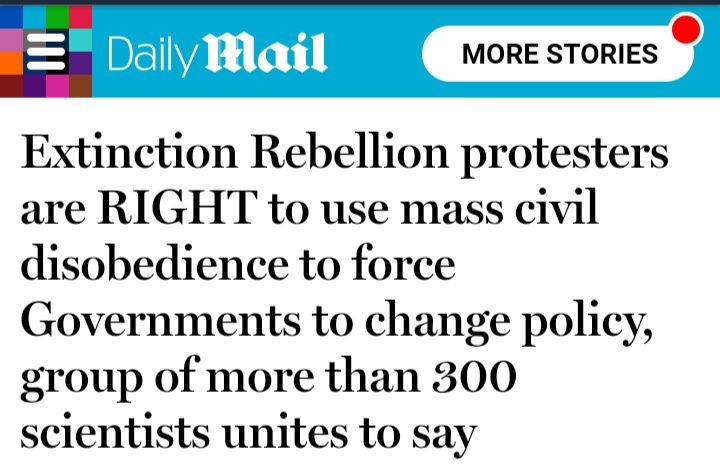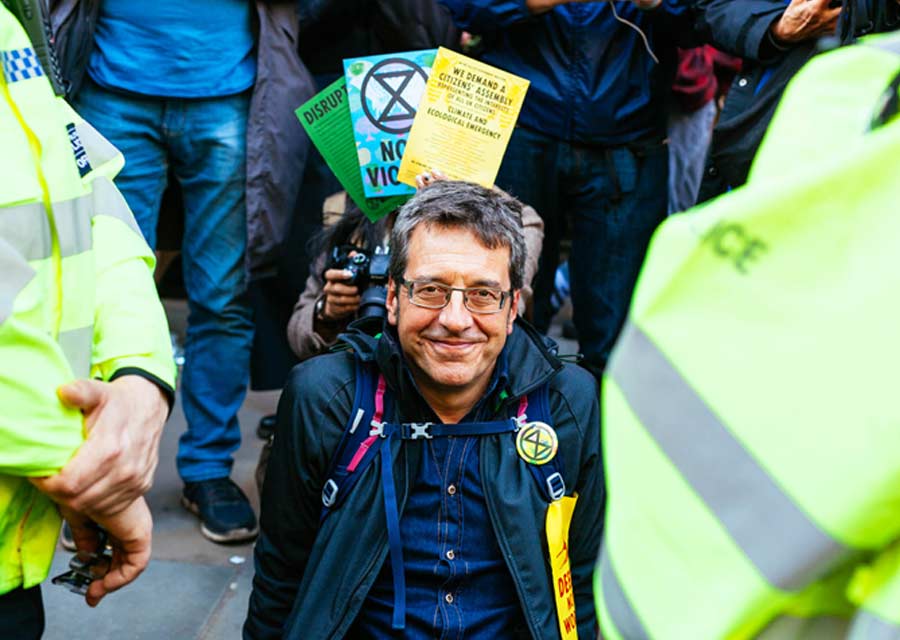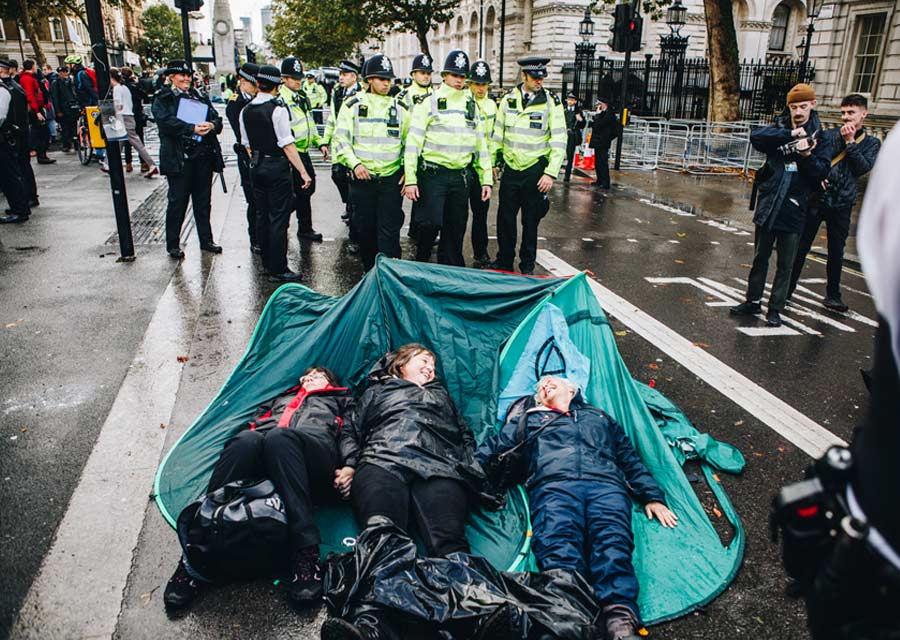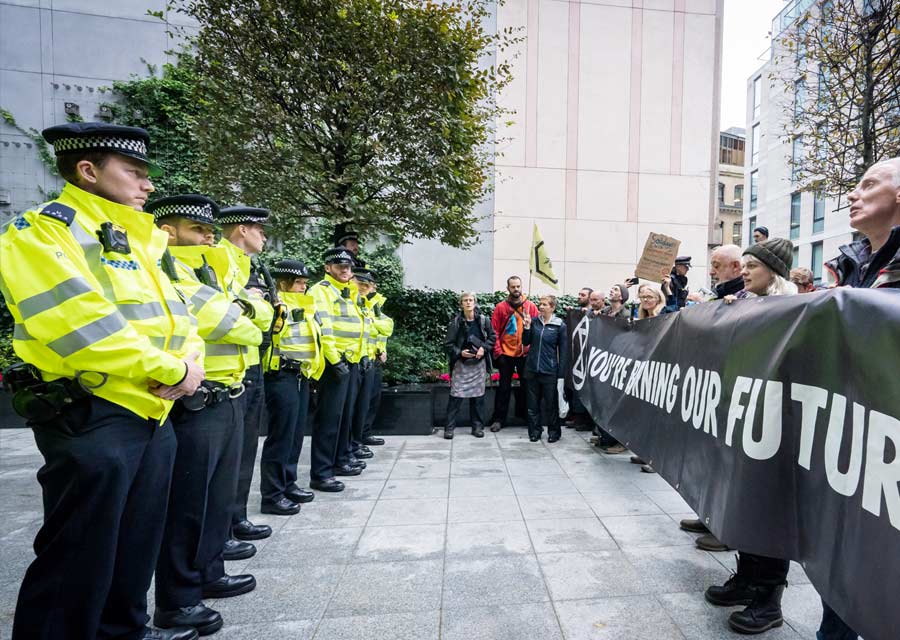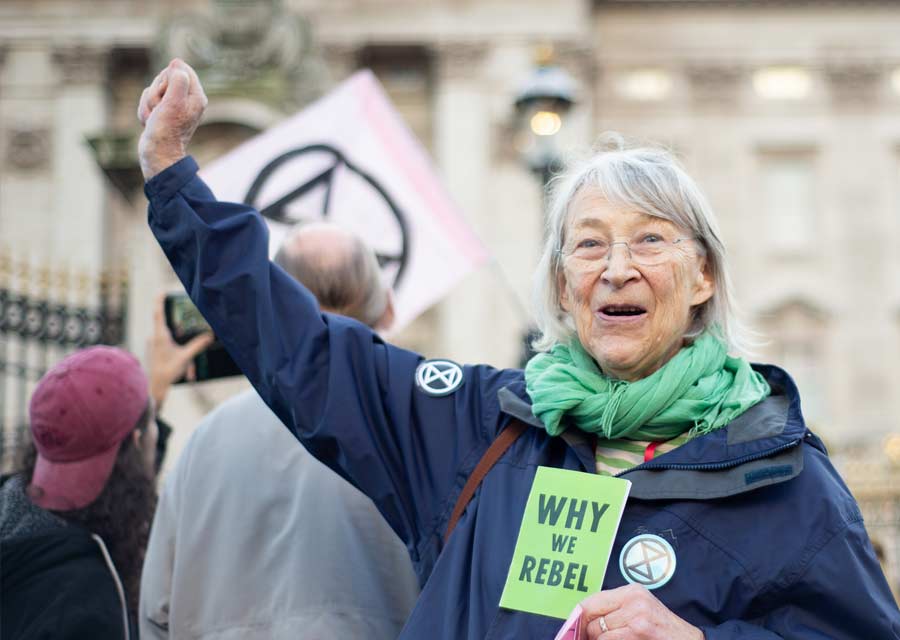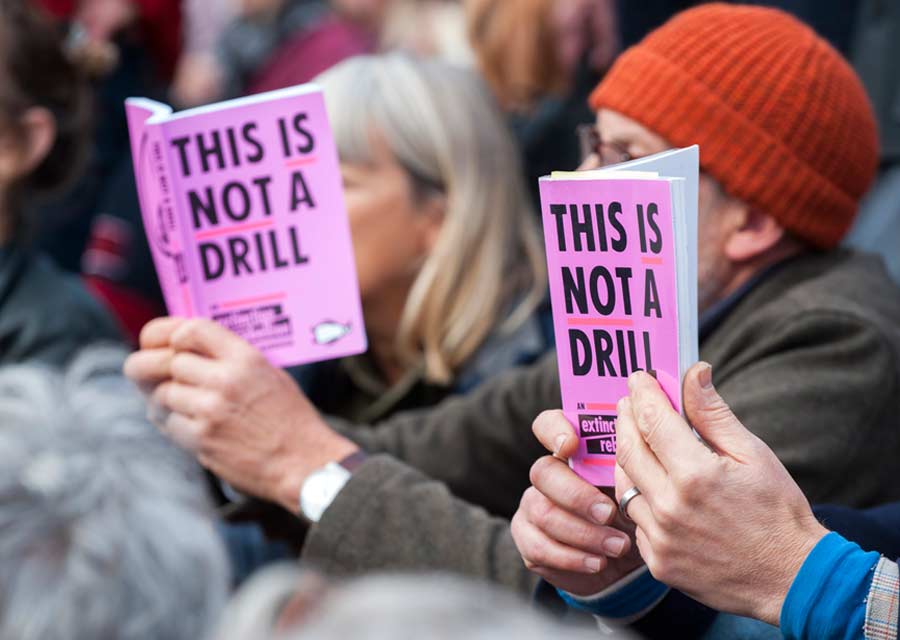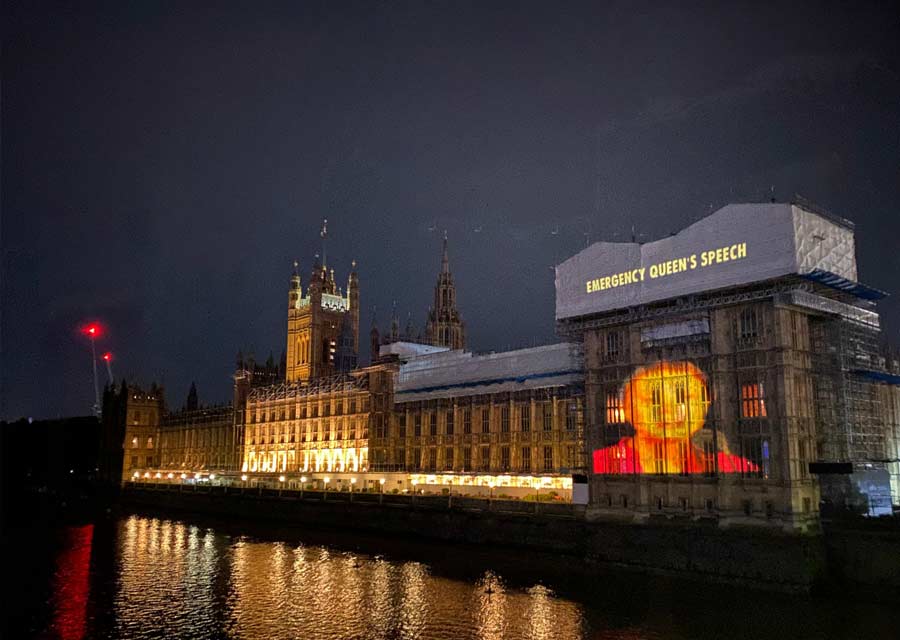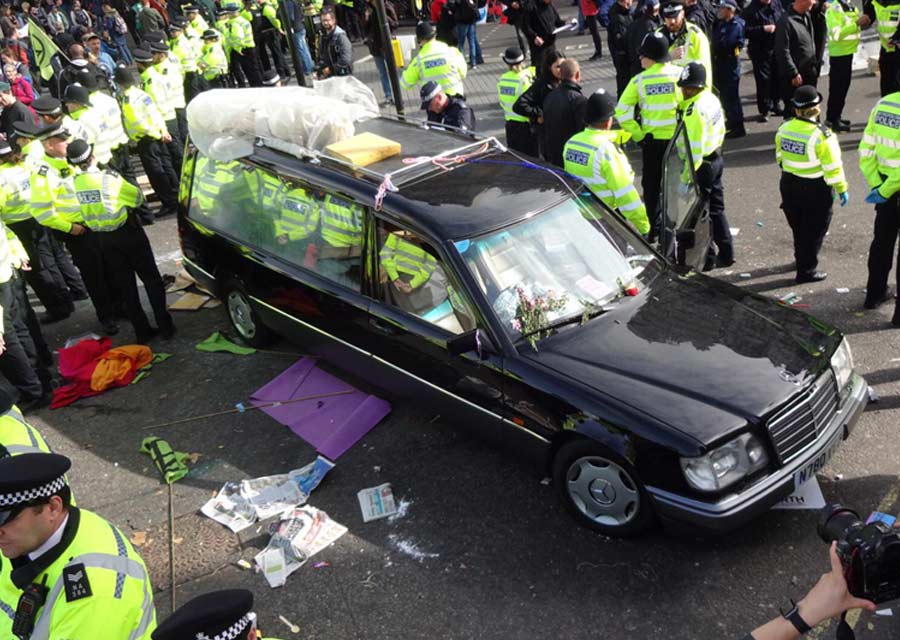After the internet shouting, Westminster was tranquil. A bunting of high-vis policemen lolled about Whitehall. “We’re holding it as a contingency”, said one. For what? “For the Extinction Rebellion.”
Soon, though, here they were – a swarm of buggies, babies, mothers and nurses. With strategic cunning, Extinction Rebellion (XR) Families had exploited a gap in the police cordon. These insurgents quickly settled down and began breast feeding.
I looked away. “It’s the point, isn’t it?” said my policeman friend. “To prod us in the irritating bits.”
I made my excuses and headed to Trafalgar Square.
Amongst a huge cohort of ne’er-do-wells – one of whom kindly offered me a cup of tea – was the most nefarious of all. In the corner of the XR Scientists’ large gazebo, I picked up a copy of a small book, Common Sense for the 21st Century. Written by XR co-founder Roger Hallam, the book is deemed so so dangerous that Hallam currently languishes in Wormwood Scrubbs prison.
That’s because – in the middle of last year – Hallam and his crew discovered something that could change the face of modern politics. And that discovery has upset – and continues to upset – rather a lot of people.
Civil Disobedience Works
My newly-installed Telegram app beeped and I closed the book. A blockade was on.
Next to Liverpool Street station, several hundred people locked together outside a ritzy hotel. A doorman told me: inside was the 6th Government Oil & Gas Fiscal Summit, a shindig to discuss how government can best form policies to help industry.
But here too was Hallam’s theory: marches don’t work, and neither do petitions. Writing to your MP – forget it; no: you have to cause disruption. And the best way – the most effective way – is via the tactic of non-violent civil disobedience.
I watched an expensively-tailored man yell “Fuck you” into face of a teenager handing out XR flyers. It was an appropriate metaphor for the reaction to the school strikes of a few weeks back.
But this too is predicted by Hallam: “the least effective way to change things is not to upset people,” Hallam has said. “It’s just the way it is.”
A Theory of social change grounded in historical precedent
Labour Peer Peter Hain on Extinction Rebellion’s place within the pantheon of civil disobeidence
Hallam and his crew arrived at their conculsion after studying a simple question: what works?
And they found the answer in the study of movements employing non-violent civil disobedience. Examples abound: from the the singing revolution of Estonia in 1991, to the Egyptian revolution of 1919 (which led to independence from the UK three years later). The East German uprising of 1989 were explicitly non-violent, as was the occupation to resist the expansion of a military training base in Larzac, France in 1972.
The list goes on: Gandhi’s Salt Marches; the 19th Century Chartists (successfully calling for male suffrage in England) the Boston Tea Party; the Freedom Rides and the anti-Vietnam war protests – when you look at it, there’s plenty of examples of how to make effective change happen.
And that’s not to mention the UK’s hugely successful anti-fracking movement.
Sacrifice and Compassion – forgotten political tools
As several people were carried away from the hotel blockade (singing) I thought of Hallam’s second thrust. All these thousands of people getting arrested, they do this for a reason: sacrifice. Sacrifice is a highly unfashionable political term, and one neglected by all mainstream parties. But compassion, once aroused through witnessing sacrifice, is difficult to get back in the damn bottle.
Basically put: people really, really care about those giving up their prividges for the sake of others. The social science proves it: sacrifice works.
Indeed, the efficacy of sacrifice was dramatically on show last year. Three anti-fracking activists were jailed for sitting atop trucks delivering a drilling rig to Cuadrilla’s Preston New Road. After their jailing, an outpouring of anger and solidarity burst into the mainstream. It couldn’t have been planned better. The 3 were hurredly released, and thousand of newbie anti-frackers recruited.
Civil disobedience married to sacrifice provokes large changes in public opinion. It happened after the Balcombe anti-fracking protest of 2013 – public support for fracking never recovered. And it is happening to XR – witness the movement’s explosive growth in all parts of the country.
Extinction Rebellion can follow the success of the anti-fracking movement
Worryingly for the government, though, the civil disobience of the Balcombe protest camp also provoked a national wave of civil disobedience which – six years later- has arguably defeated the industry.
XR is already calling for its rebels to regionalise into local groups focussed around local issues (have a look at this XR strategy document). The anti-fracking movement provides a clear precedent. And there are plenty of regional targets: Norwich Council last week approved the expansion of Norwich approves airport; Surrey County Council last month approved drilling for oil near Gatwick.
There is plenty of opportunity for a widespread locally-based civil disobedience movement against carbon polluters. Just like fracking, their widespread availability means they are literally in everybody’s back yard.
From Despair comes Tactics
Extinction Rebellion is just a year old – and already boasts more local groups than the anti-fracking movement, a testament to it’s skillful use of strategy. See them all here
I returned to Trafalgar Square and was quickly doused with petals. A group of policemen carried past an elderly woman in full funeral gear. The crowd shouted ‘we love you,’ and threw bouquets. Witnessing radical self sacrifice like this is really quite humbling. And there are five thousand people willing to be arrested in this way.
What XR have done is created a theory of change, and put it into practice. There’s no-one telling these people what to do: XR is based on the meme of making-change-work. Its popularity is not based on celebrity, or fame, or even desperation (although the latter is often a precursor) but on an understanding of what works. From grief comes tactics, as the Banksy says:
And it works: look at the social science: after April’s protests the number of people wanting something done about climate change rose to 79%.
Ranged against it is an government thoroughly pentrated by fossil fuel interests, and paralysed by Brexit. It is a contrast of two very different forces. Yet history shows that XR’s strategy works. The movemnet is continuing to organise ferociously – in Brighton, for example, XR has held four meetings a week even while the London rebellion has contined.
